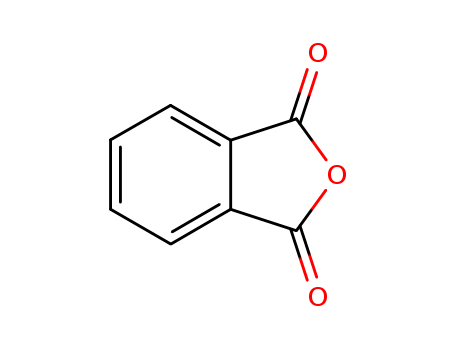10.1021/jo00191a003
The study explores a direct method for the periodination of aromatic compounds using periodic acid (HIO?) and iodine in concentrated sulfuric acid. This method allows for the exhaustive iodination of unactivated aromatic substrates such as benzene, nitrobenzene, benzoic acid, chlorobenzene, phthalic anhydride, and toluene, converting them into their respective periodo derivatives. The study also reports the conversion of benzonitrile to pentaiodobenzamide. The direct periodination method is compared favorably to the existing mercuration/iododemercuration sequence in terms of reaction time and purity of products. The study highlights the versatility of the method, demonstrating that partially iodinated products can be obtained under less vigorous conditions. Additionally, the study discusses the limitations of the method, noting that certain activated aromatics and easily oxidized substrates do not fare well under these conditions. The research provides detailed experimental procedures and characterizations of the synthesized compounds, contributing to the field of organic chemistry by offering a more efficient route for the preparation of polyiodinated and periodinated aromatic compounds.
10.1002/jccs.201400228
The study focuses on the synthesis and characterization of novel aminobenzylcantharidinimides and related imides using proton NMR spectra. Researchers reacted various acidic anhydrides, including cantharidin, with aminobenzylamines and triethylamine to produce a series of imides with yields ranging from 35% to 87%. These compounds were evaluated for their effects on nitric oxide (NO) induction, and the results showed that para-aminobenzylic imides were more effective in inhibiting NO synthesis compared to their ortho and meta counterparts. The most potent compound, 3fp, demonstrated 35% inhibition of inducible NO synthase (iNOS). The findings provide insights into the structure-activity relationships of these compounds and their potential as therapeutic agents.
10.1021/jm00157a027
The research aimed to synthesize and evaluate the antitumor properties of the 9-aza analogue of N-(trifluoroacetyl)-4-demethoxydaunomycin, a derivative of the anthracycline antibiotics doxorubicin and daunomycin. The study hypothesized that the bioisosteric replacement of carbon with nitrogen in the alicyclic A ring of the glycosides could potentially enhance antitumor activity. The synthesis involved a series of chemical reactions, including Pomeranz-Fritsch condensation, borohydride reduction, acid-catalyzed cyclization, selective N-acetylation, Friedel-Crafts acylation, epoxidation, and glycosidation with N,O-bis(trifluoroacetyl)daunosamine bromide and silver trifluoromethanesulfonate. The resulting diastereoisomers were separated and their structures confirmed using CD and NMR spectroscopy. However, the study concluded that both diastereoisomers were inactive in mice carrying the P388 tumor, suggesting that the side-chain keto moiety could not be replaced by an aliphatic amide group without losing antitumor activity. The chemicals used in the process included 2,5-dimethoxy-benzaldehyde, 2-aminoacetaldehyde dimethyl acetal, sodium borohydride, phthalic anhydride, and various reagents for protection and deprotection of functional groups, as well as for the final glycosidation step.
10.1039/b803926g
This research aimed to synthesize 5-(bromomethylene)furan-2(5H)-ones and 3-(bromomethylene)isobenzofuran-1(3H)-ones, compounds derived from commercially available maleic anhydrides and phthalic anhydrides, with the goal of investigating their potential as inhibitors of microbial quorum sensing (QS), a communication mechanism used by microorganisms to regulate gene expression in response to population density. The study focused on their ability to interfere with microbial communication and biofilm formation by Staphylococcus epidermidis, a bacterium associated with medical implant infections.
10.1021/jo01295a003
The study investigates the stability and reactivity of nitroethylene as a useful synthon in organic synthesis. The researchers found that nitroethylene is stable as a standard solution in benzene when stored in a refrigerator for at least six months. They prepared nitroethylene through the phthalic anhydride-mediated dehydration of 2-nitroethanol. The study explores nitroethylene's involvement in various reactions, including (4 + 2) cycloadditions with cyclopentadienes and their derivatives, Michael additions with enamines like indole and 1-morpholinocyclohexene, and ene reactions with substrates such as α-pinene. The products formed, such as 2-endo-nitronorbornene, 7-syn-(methoxymethyl)-2-endo-nitrobicyclo[2.2.1]heptene, and 3-(nitroethyl)indole, demonstrate nitroethylene's potential as a versatile reagent for synthesizing functionalized systems with further elaboration possibilities. The study highlights nitroethylene's stability and its ability to participate in diverse organic reactions, suggesting its potential for broader application in synthetic chemistry.



 Xn
Xn


